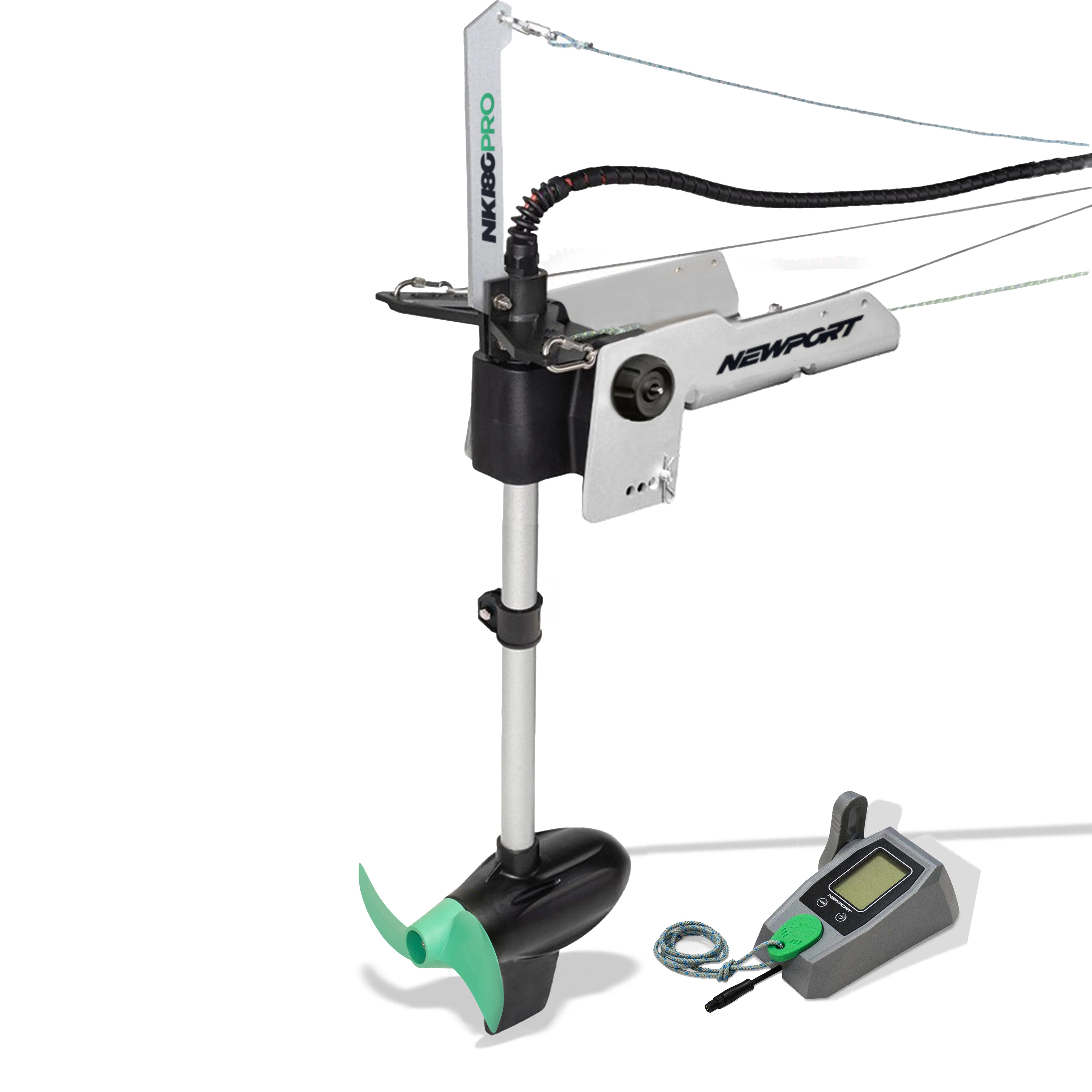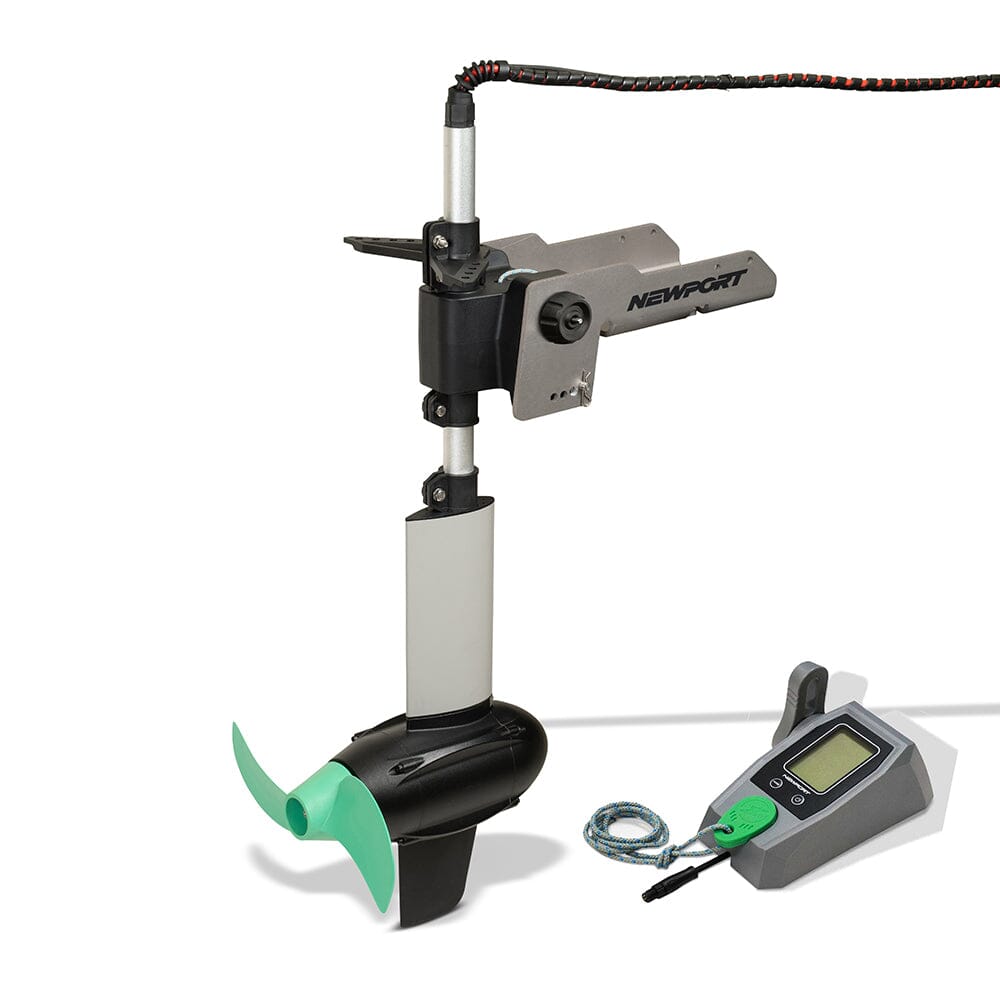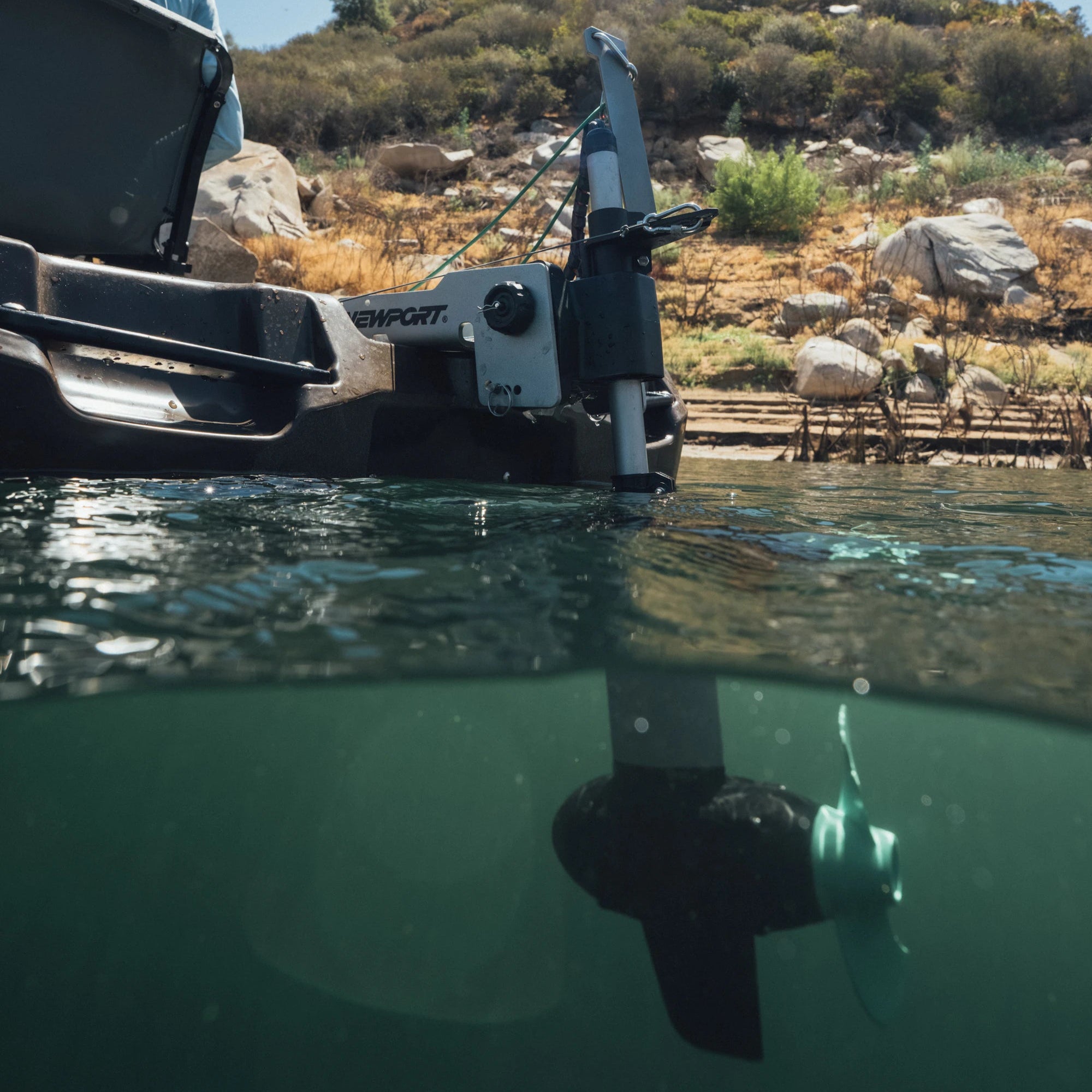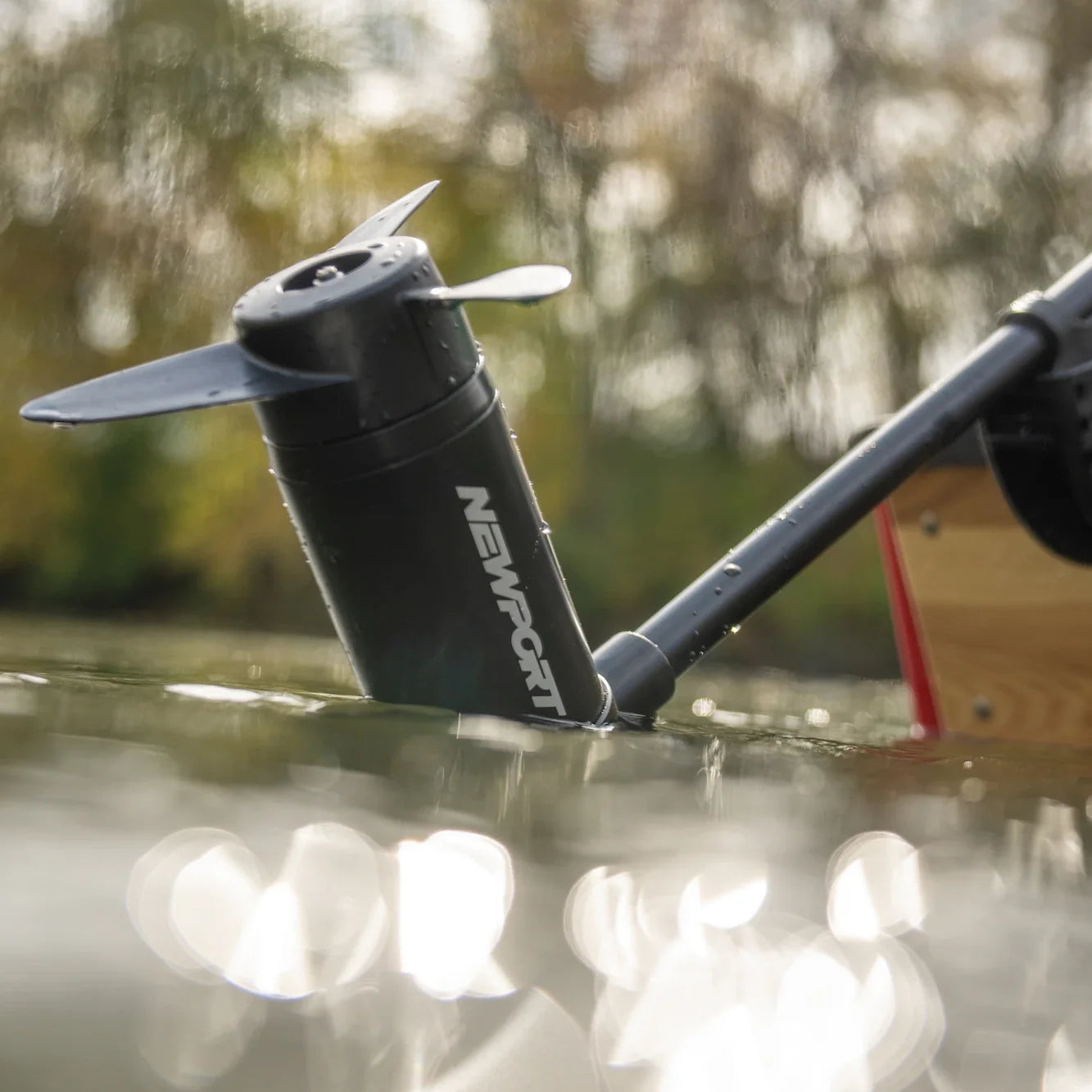Understanding Thrust vs Horsepower for Trolling Motors
One of the most common questions we hear from Newport anglers is:
“How does pounds of thrust compare to horsepower?” It’s a great question — and an important one if you’re trying to understand how your electric trolling motor stacks up to a traditional gas outboard.
It’s a great question — and an important one if you’re trying to understand how your electric trolling motor stacks up to a traditional gas outboard.
Thrust vs Horsepower — What’s the Difference?
-
Thrust (lbs): Measures static force — how much push your motor can generate at zero speed.
-
Horsepower (HP): Measures work over time — specifically, 550 foot-pounds of work per second.

Because one measures force and the other measures power over time, there’s no direct conversion between thrust and horsepower. However, we can estimate a motor’s power output using a simple formula.
How to Estimate Horsepower for Electric Motors
To approximate horsepower, multiply voltage by amp draw to get wattage, then divide by 746:
(Volts × Amps) ÷ 746 = Horsepower
That’s because 746 watts = 1 horsepower.
Example Horsepower Equivalents for Newport Trolling Motors
| Model | Voltage | Max Amp Draw | Approx. Wattage | Est. HP Equivalent |
|---|---|---|---|---|
| NV Series 36lb | 12V | 29A | 348W | 0.47 HP |
| NV Series 46lb | 12V | 40A | 480W | 0.64 HP |
| NV Series 55lb | 12V | 52A | 624W | 0.84 HP |
| X Series 62lb | 12V | 58A | 696W | 0.93 HP |
| L Series 86lb | 24V | 48A | 1152W | 1.54 HP |
These ratings help you visualize how much energy your trolling motor produces compared to a small gas outboard — but remember, electric motors deliver their torque instantly. That means faster response, smoother acceleration, and greater control in tight quarters.
The Takeaway
While there’s no direct horsepower conversion for thrust, this formula gives you a reliable reference point.

At Newport, our trolling motors — from the trusted NV Series to the upgraded X and L Series — are designed for anglers who want quiet, efficient, and powerful performance without the noise, fumes, or maintenance of gas.












5 comments
I thank you for a good intelligent answer. Usually I get someone waffling on just to sound superior,instead of helping to educate and enabling people to make informed decisions. Thanks alot you have given me the information to buy a motor that suits my needs and my brain is still intact cheers
nice motors never will buy one until you come up with an extended tiller like Bixpy so you don’t have to twist your back to operate and steer. Amazingly unintelligent design.
This is easy. I have a West Wight Potter 15 with a motor mount off to one side of the transom. I use a 55 lb trolling motor in-harbor with no problem though I like to put a 2.5hp OB on to go out in the big water. Just look up any photo of a Potter 15 online.
I have a small, (14 foot ) sailboat I would like to be able to safely use in the ocean, but have no idea how powerful a motor I will need to do so. Also, not sure, short of a sidemounted trolling motor, how it could be mounted without interfering with the rudder of the sailboat. Please adise. And thanks in advance for your help.
To the newportvessels.com owner, Your posts are always informative and up-to-date.
Leave a comment